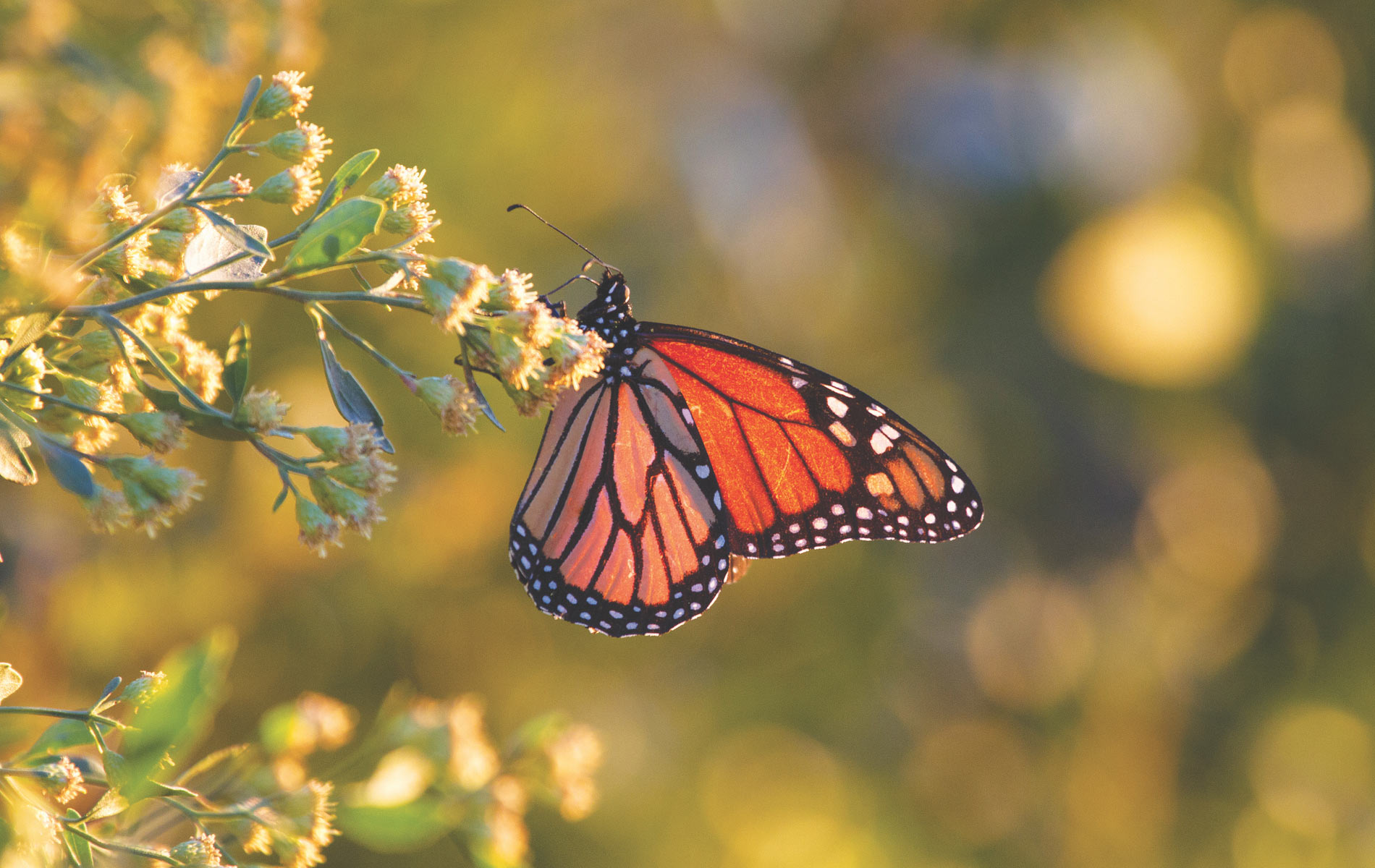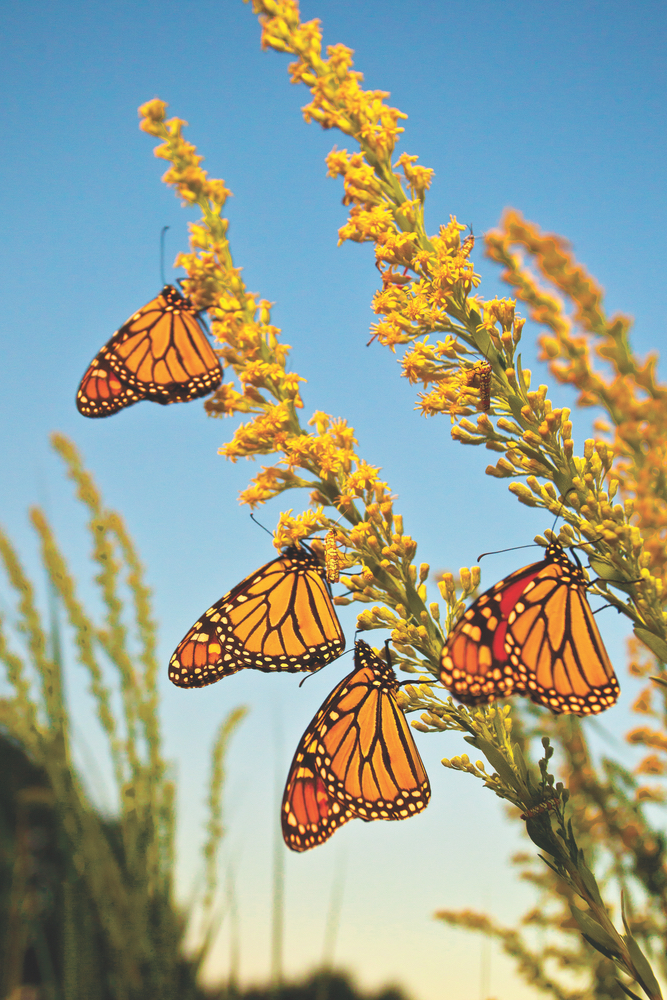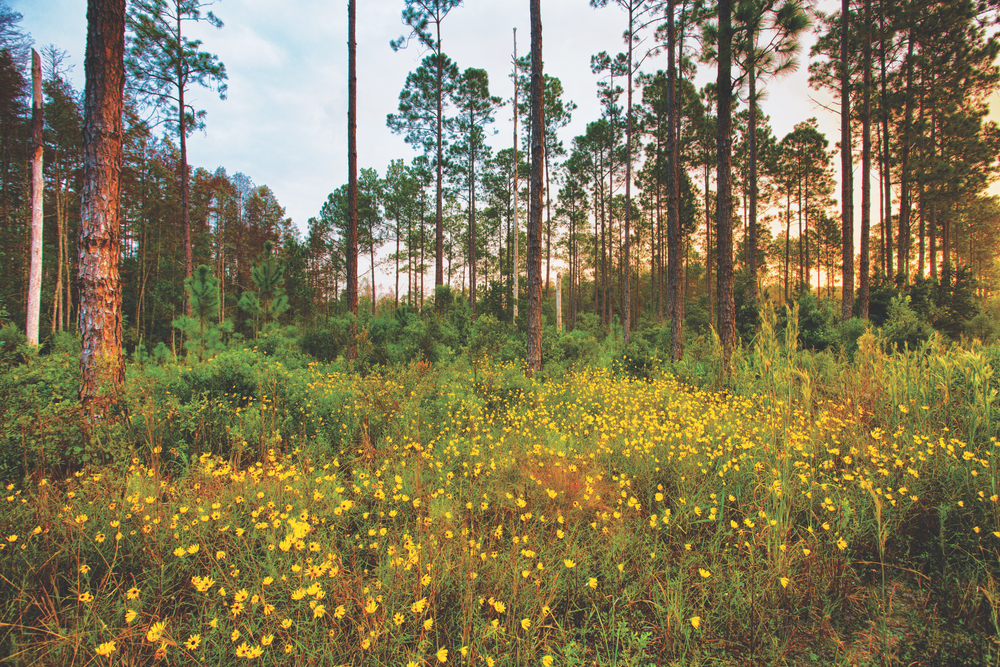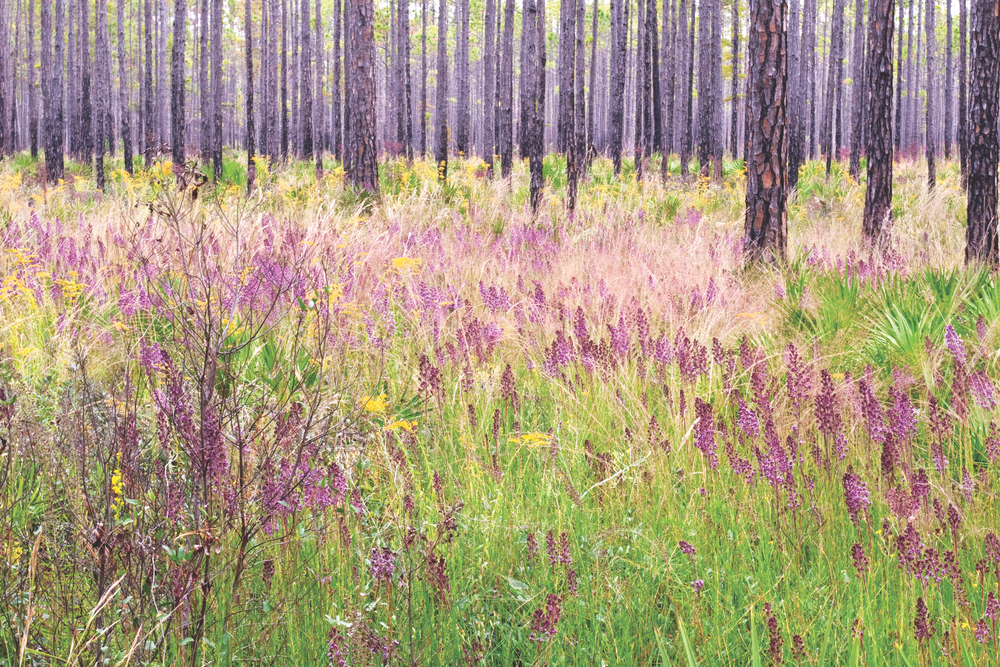
vie_magazine_monarch_butterfly_migration_hero-2
Monarch feeding on saltbush (a.k.a. groundsel tree)
A Phenomenal Journey on Gossamer Wings
By Anne W. Schultz | Photography by David Moynahan
Miracles happen all around us, often in the ordinary everydayness of life, like on a morning walk. Sometimes we stroll right past these natural phenomena, neither seeing nor comprehending. Perhaps our minds are preoccupied or our attention locked on the little mobile gadgets we carry around that keep our eyes downcast and fingers tapping. We can stare a miracle right in the face and not even recognize it as such because we are so disconnected and know so little about the natural world surrounding us. Then something startles us—a flash of color or a bird’s melodic song—and we look up and around, suddenly more conscious of what’s around us. If our curiosity were aroused and we chose to learn more, we would be utterly spellbound by the sheer wonder of it all.
Consider the monarch butterfly. Weighing less than half a gram, this fragile insect, along with millions of others, takes off—propelled by some instinctual urging—for an unknown destination three thousand miles away, guided only by a mysterious inner GPS. With wings as delicate as rose petals and a black-and-white polka-dot body about the size of a slivered almond, the monarch glides on thermal air currents and tailwinds to conserve energy for the world’s longest journey made by an insect. When sunlight strikes an outstretched wing, it highlights the distinctive patterns of orange outlined in black that resemble panes in a stained-glass window.
This miraculous journey is what inspired Leigh Ann Henion to start what she calls “phenomenon travel.” “I learned that a monarch butterfly flies thousands of miles across a continent to the same place—and sometimes even the same tree—of its ancestors. What I experienced on a mountain in Mexico in the presence of millions of butterflies was among the most moving and emotional experiences of my life. I could not let go of it. I thought, what else do I not know about?” she shares in a New York Times interview. Like most of us, Henion had no idea how phenomenal nature can be.
[the_blockquote]What I experienced on a mountain in Mexico in the presence of millions of butterflies was among the most moving and emotional experiences of my life.[/the_blockquote]
“Monarchs are unique among insects because they migrate both north and south, like birds. But unlike birds, an individual butterfly never makes a full two-way trip,” explains Sallie Lewis in a science article in The Atlantic. “Instead, a succession of four to five generations must interlink to complete the round-trip migration. Once they reach the southern United States from Mexico, they search for milkweed on which to lay their eggs. The butterflies that emerge from these eggs represent the start of a new life cycle, and they are known as the year’s first generation of butterflies.”
The life cycle of a monarch and its dependency on wildflowers is as fascinating as its migration. The metamorphosis from tiny egg to earth-crawling caterpillar to chrysalis from which emerges a beautiful butterfly is so dramatic it symbolizes spiritual transformation. And wildflowers are an essential part of the process. “In their larval stage, monarch caterpillars feed almost exclusively on milkweed and as adults get their nutrients from the nectar of flowers,” the Defenders of Wildlife website explains. “The milkweed they feed on as a caterpillar is actually a poisonous toxin and is stored in their bodies. This is what makes the monarch butterfly taste so terrible to predators.”
According to the New York Times, the number of monarchs migrating from the United States has dropped by 90 percent in the past twenty years. Since my family and I moved to the Florida Panhandle about twenty years ago, we have sadly witnessed their dwindling numbers firsthand. Here, you don’t need a calendar to know it’s October; monarch butterflies arrive every fall in clouds of fluttering wings. They dance through the air before raining down onto masses of golden wildflowers stretching for miles along wide margins of a scenic highway skirting the beach.
[the_blockquote]Wildflowers act like bright lights lining an airport runway, steering butterflies down to a succulent feast.[/the_blockquote]
With a superabundance of native wildflowers, the Florida Panhandle is one of the important “wildflower corridors” where exhausted monarchs rest up and refuel for the next leg of their journey. It’s no accident that wildflowers bloom in such large masses and high-voltage colors, for that makes them highly visible to butterflies soaring above. Wildflowers act like bright lights lining an airport runway, steering butterflies down to a succulent feast.
Monarchs showed up on schedule year after year in the same spectacular display—that is, until the practice of mowing began. Large industrial mowers clipped native grasses and wildflowers as short as a military crew cut, in places scraping down to barren patches of sand. Before long, this intensive mowing eradicated most of the wildflowers, which in turn drastically reduced the number of butterflies passing through, except at Florida state parks, where native vegetation is preserved. “During migration season, you can observe monarchs clustering in large numbers on salt myrtles blooming around the park,” says Patrick Hartsfield, the assistant park manager at Grayton Beach State Park.
A group of locals met with county public works officials to express their concerns. The locals explained it’s still possible to mow and not harm the flowers if blades are set higher and mowing is restrained until flowers reseed. County officials agreed to comply, yet they continued on with the same destructive practices.
Perhaps they didn’t understand the importance of wildflowers in attracting major pollinators like bees and butterflies, and what that means to humans. As pollinators collect nectar, they carry pollen from one flower to the next, resulting in reproduction of the species. Monarchs and other pollinators “help pollinate over 75 percent of our flowering plants, and nearly 75 percent of our crops,” states the U.S. Fish and Wildlife Service home page.
Or maybe they didn’t know about wildflower conservation programs implemented by Florida and other states for preserving native wildflowers that in turn beautify highways. The Florida Department of Transportation created one in 1963 to “improve aesthetics while lowering maintenance costs.” More recently, the department stepped up efforts to “preserve naturally occurring stands of wildflowers and remnants of native plant communities on Florida’s more than twelve thousand miles of state-maintained roads.” The intention is to develop roadsides into “biological corridors comprised of a diverse mix of planted and naturally occurring native flora that will increase habitat for pollinator species while safely reducing the cost of managing roadside vegetation.”
The movement has spread beyond the States. In 2014, the United States joined Canada and Mexico in a shared commitment to conserve the monarch by restoring its habitat from Canada to Mexico. First Lady Michelle Obama planted the first pollinator garden at the White House with milkweed and other plants that butterflies feed on. “The following spring, the White House released a plan to promote similar gardens to foster the insects’ nourishment and reproduction across the country,” states Sallie Lewis in The Atlantic.
[the_blockquote]Everyone is able to participate in this miracle.[/the_blockquote]
Let’s get on the bandwagon and help sustain life instead of destroying it. Everyone is able to participate in this miracle. One way is to retain native habitats when possible; another is to replant with native species instead of introduced ones. We can also plant pollinator gardens that attract monarchs and some of the nearly two hundred butterfly species native to Florida, as well as other pollinators like birds and bees. We can also stop using pesticides that kill beneficial insects along with pests.
Once we step out of the often stressful and chaotic artificial world we have manufactured and into the one created by God, we might be like Leigh Ann Henion and wonder what else do we not know about? That curiosity might inspire a lifetime of getting outdoors and exploring the natural world where we will recognize that miracles are happening all around us.
— V —
To learn more about wildflowers, visit www.FlaWildflowers.org.
Share This Story!
KEEP UP WITH THE LATEST STORIES FROM VIE





















































































































































